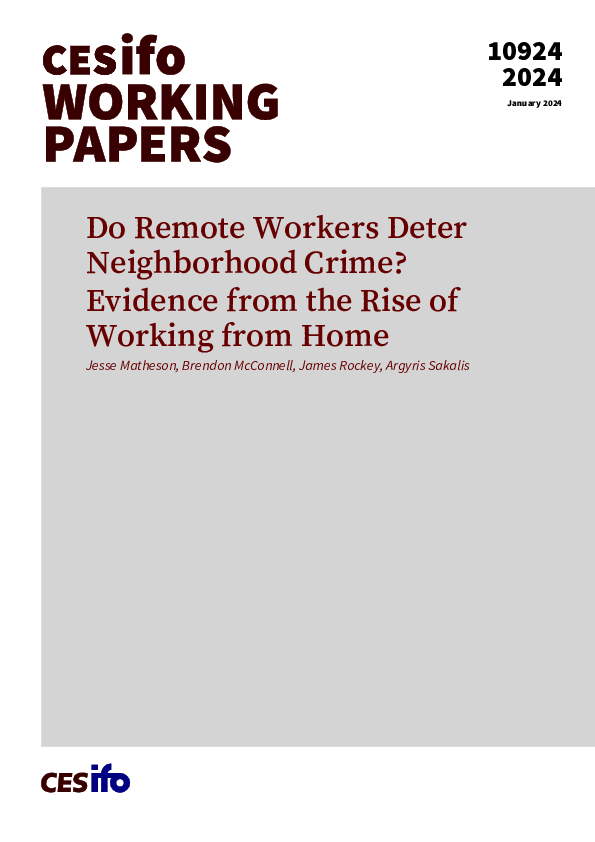Do Remote Workers Deter Neighborhood Crime? Evidence from the Rise of Working from Home
CESifo, Munich, 2024
CESifo Working Paper No. 10924

In this paper, we provide the first evidence of the effect of the shift to remote work on crime. We examine the impact of the rise of working from home (WFH) on neighborhood-level burglary rates, exploiting geographically granular crime data and a neighborhood WFH measure. We document three key findings. First, a one standard deviation increase in neighborhood WFH (9.5pp) leads to a persistent 4% drop in burglaries. This effect is large, explaining more than half of the 30% decrease in burglaries across England and Wales since 2019. Second, this treatment effect exhibits heterogeneity according to the remote work capacity of contiguous neighborhoods. Specifically, being surrounded by relatively high WFH neighborhoods can entirely offset the crime-reducing benefit of a given neighborhood’s WFH potential. This is consistent with the predictions of a spatial search model of criminal activity that we develop in the paper. Finally, we document large welfare gains to the decrease in burglary. We estimate welfare gains using a hedonic house price model. Our most conservative estimates show the welfare gains are £24.5billion (1% of 2022 UK GDP), but the true gains are likely much higher. These estimates suggest the reduction in burglaries are among the most important consequences of the rise in WFH.